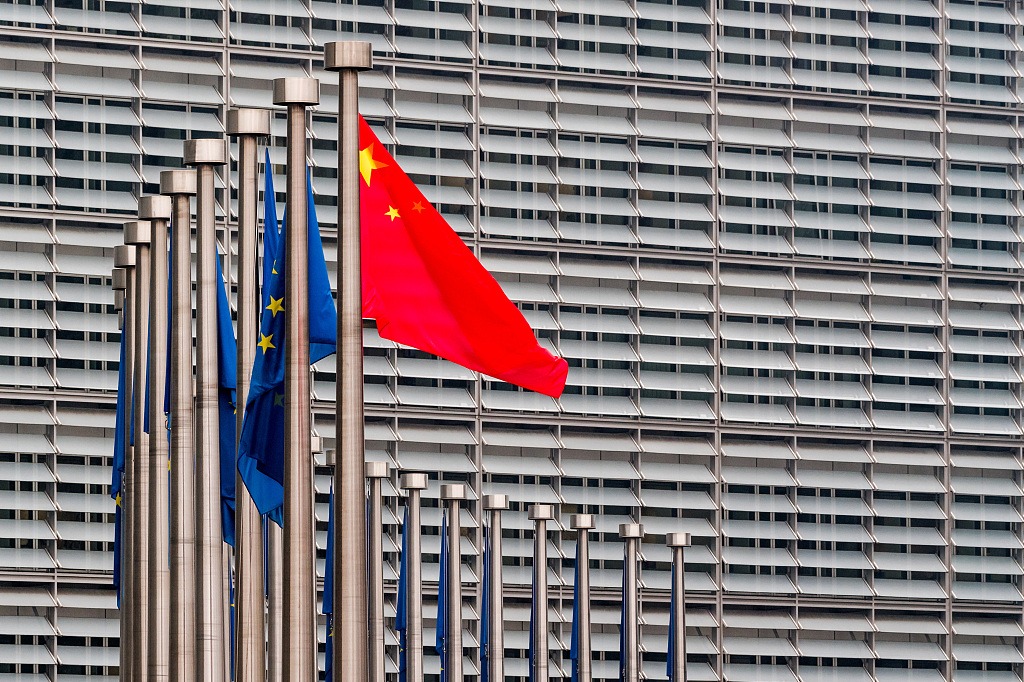Silicon Valley, Shenzhen set example for tech ties
Experts advocate embracing Chinese innovations and a reciprocal approach


The relationship between Silicon Valley and Shenzhen, often dubbed "China's Silicon Valley", exemplifies the mutual benefits of cooperation between US and Chinese technology companies.
Rather than viewing China's technological advancements as a "threat", prominent US-China business relations experts said such innovations should be welcomed and embraced.
Ker Gibbs, an executive in residence with the China Business Studies Initiative at the University of San Francisco, said Chinese companies have become increasingly competitive and innovative. He advocates a reciprocal approach, suggesting that the United States and China should learn from each other.
"China's digital businesses and services are phenomenal. Even though reading Chinese menus is, of course, slower for me than English, I can easily navigate Chinese apps and use them to do everything from ordering food to paying for parking," Gibbs said. He was most recently the president of the American Chamber of Commerce in Shanghai.
Gibbs found these apps "powerful" and "easy to use", attributing their rapid development to intense competition and the ability to conduct quick, low-cost experiments in the Chinese market.
"We're also seeing digital innovation cross over into traditional businesses. Chinese-made cars, for example, have integrated digital interface designs very effectively. Foreign company CEOs often report that their local competitors adopt digital technologies faster, which means they are watching and learning from Chinese competitors," he said.
He also emphasized Chinese companies' strength in creating innovative business models. He cited WeChat as an example, explaining how it combined existing technologies such as cellphones, messaging and mobile payments into a unique and powerful business model that "has yet to be replicated in quite the same way elsewhere".
"You see this kind of thing everywhere in China, where an entrepreneur has found a gap and filled it. China's entrepreneurs are unstoppable. As long as they are allowed to continue to prosper, China's future is bright," he said.
Craig Allen, president of the US-China Business Council, echoed these sentiments, cautioning against underestimating the "Shenzhen model".
'Strong and ambitious'
While he believes the Silicon Valley model will ultimately prevail because of its "enthusiastic embrace of diversity and inherently global nature", Allen urged giving the Shenzhen model "the respect that it deserves" during a recent discussion organized by Stanford University on the relationship between Silicon Valley and Shenzhen.
He described Shenzhen as a "strong and ambitious" competitor, capable of mobilizing vast resources, leveraging the vast market scale and utilizing "superb" engineering talent.
"They are fast, and they are agile. They have strong government support and their ecosystem and infrastructure are second to none," he said, adding that the two regions have had a complementary relationship.
Silicon Valley has benefited significantly from cooperation with their Chinese counterparts, particularly in outsourcing labor-intensive operations to China and benefiting from Chinese excellence in manufacturing.
This complementary relationship extends to research and development, with many US companies conducting R&D in China. Initially focused on localizing international products, these US corporate R&D efforts in China are increasingly contributing to the global operations of US companies, a trend Allen expects to continue.
"I think that Chinese entrepreneurial drive and creativity is something to be celebrated and welcomed," he said. However, he acknowledged that rising national security concerns in the US have affected private companies, creating an atmosphere of uncertainty.
Addressing the issue of US export controls and other measures aimed at containing China's technological development, Gibbs said the concept of "containing China" has been "misconstrued and destructive".
From a business perspective, he explained, the notion of "containment" does not apply. "All businesses do better when the economy is strong and consumers have more buying power. Why would anyone want to contain that? America's businesses want China's economy to be strong and the people prosperous," he said.
Regarding the current strained relations between the US and China, Gibbs said assigning blame serves no purpose. "The restrictions on both sides mean consumers lose out and innovation suffers. The goal should be to fix the relationship so that these kinds of restrictions will not be necessary."

































